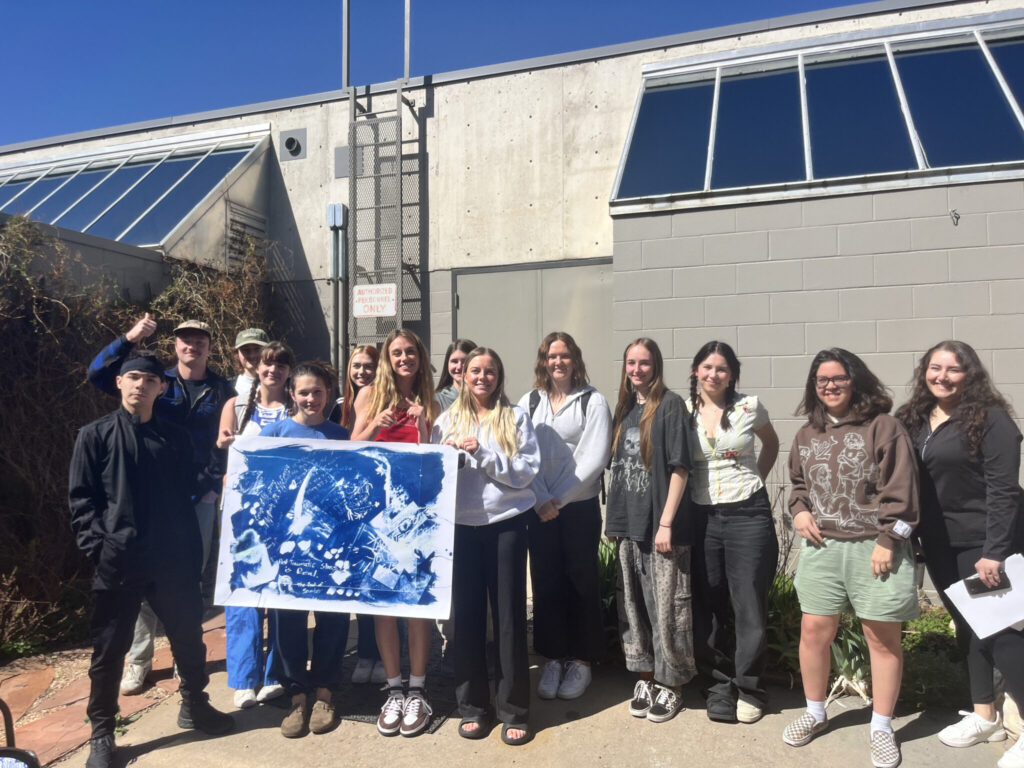
Written by Robin Walter, M.F.A.
For many fruit-bearing trees, such as apple, pear, peach and plum, cross-pollination must occur for the tree to develop fruit. This movement of pollen may occur by wind, or via symbiotic relationships with various animals (e.g., bees, birds and bats) that carry pollen from plant to plant.
In the case of Colorado State University’s flagship Green & Gold Initiative, cross-pollination occurs between disciplines, departments, colleges and communities. Taught by diverse faculty across the University, the program strives to create the kind of interdisciplinary thinkers who can face the pressing crises of the world, believing in the promise that meaningful solutions exist. Now in its third year at CSU, The Teagle & National Endowment for the Humanities (NEH)-funded initiative is a new vision built on education’s oldest premise — that gathering together to consider our mutual cares benefits us all.
This wisdom lies at the heart of Thinking Toward a Thriving Planet: “Thresholds & Encounters // Meeting the Universe Halfway,” a seminar designed and co-taught by Associate Professor of Art Johnny Plastini and Instructor of English and Creative Writing Robin Walter. This “Green” course includes explorations in literature, philosophy, creative writing, printmaking, letterpress, and book arts.
“We offer an intimate seminar structure that requires regular group discussion, intuitive problem solving and articulation of personal as well as global philosophic perspectives,” Plastini said. “These are vitally important soft skills to develop for success in any profession outside of the university setting.”
Through both creative and critical lenses, students investigate how to build a more sustainable, liveable and just future.
Pursuing rich connections within and beyond the University, the course often ventures outside of the conventional classroom. Field trips range from Fort Collin’s Lincoln Center gallery exhibition “Shifting Climate: Reflections on Land, Climate and Beauty” to CSU’s seed lab, which archives the genetic material of plants, animals and microbes that may otherwise disappear. The course’s culminating project consists of a hands-on art project (cyanotype) made in conjunction with the women’s group at the Larimer County Community Corrections facility through a partnership with Colorado Literacy Center’s Speakout! program, which facilitates creative opportunities within the carceral system.
Students in the course discovered a variety of things about themselves, about others, and about our interrelationship.
“While participating in this collaborative process, I had the realization that humanity is always interconnected and that the strength that comes from embracing diversity is enormous,” said CSU Computer Science major Jordan Upchurch. “The cyanotype print itself became a manifestation of community, helping us feel like we belonged and understood each other even though we come from different places and have different experiences.
“Involving ourselves in creative exploration and working together with communities that we are not a part of helps to break down barriers and promotes understanding between different groups, which in turn helps encourage empathy and compassion,” Upchurch added. “The process gave me a deeper understanding of the power of shared creativity, as well as the importance of community and connection.”
The collaborative cyanotype print explores themes of identity, place, belonging and hope.
“We cannot thrive and grow without interaction with others, whether that be engaging in discourse or collaboration on a piece of art,” said Elizabeth Repp, a sophomore studying Biological Sciences at CSU. “Our art is an extension of ourselves, of our experiences and of our stories. By looking at someone’s art we can view pieces of them we would otherwise miss.”
About the art project, Speakout! participant Rayna V. said, “I got joy out of making this piece of art. It was a process of great mindfulness, and it allowed us to share a piece of ourselves with others.”
The reflections from both CSU and Speakout! participants underscore the power of collaboration and community.
“We drew inspiration from our cultural backgrounds, personal stories or common struggles, creating a piece that resonates with the collective experiences of the broader community,” said CSU Exploratory Studies major Olivia Ruiz. “By highlighting commonalities and celebrating diversity, the artwork promotes empathy, healing and dialogue across cultural, social, and geographical boundaries.”
The Green and Gold Initiative hopes to cultivate an educational ethos that reflects the importance of interdependence and interconnection in a beautiful, precarious and rapidly changing world.
“In increasingly siloed learning environments in an increasingly disconnected world, the importance of forging connections across diverse communities is paramount to creating compassionate and curious thinkers and leaders,” said CSU Instructor Robin Walter.